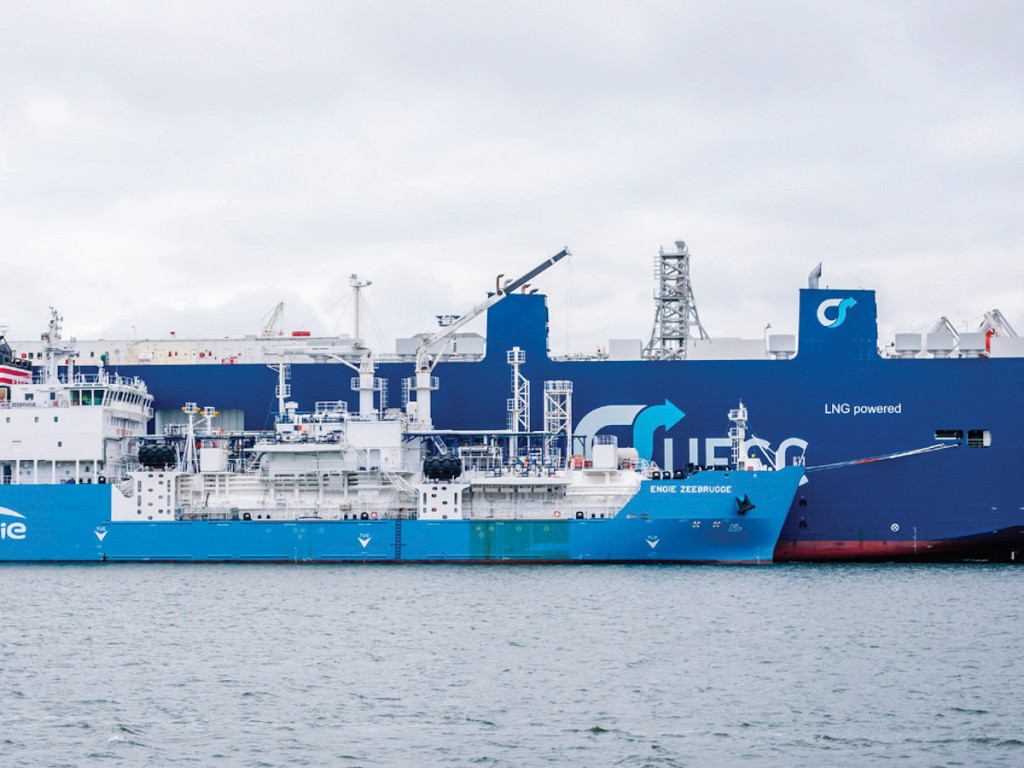Page 1: Breakbulk Sitting on the Sidelines
Page 2: IMO 2020 – An Opportunity Docks
Cost recovery has already begun for IMO 2020.
On September 1st Zeamarine, one of the largest breakbulk operators in the world, announced a bunker adjustment policy related to IMO 2020—the International Maritime Organization’s (IMO) regulation to limit maritime emissions. That made the Hamburg-based breakbulk and multipurpose carrier one of the first in the sector to implement a surcharge in an effort to recover additional costs associated with the IMO policy. Company executives said the adjustment is based on the difference between the costs of traditional heavy fuel oil and the marine gasoil to be used in compliance with IMO 2020.

RTM Lines, an Ocean Transportation Intermediary (OTI) specializing in breakbulk cargo, has already started levying a bunker surcharge “based on web-based bunker platform reports which will be provided along with the freight invoice,” according to Richard Tiebel, the company’s head of operations. The OTI reserves “the right to adjust [the charges] at time of quotation, time of loading, and at time of discharge,” he added.
The new IMO regulation, which will enter into force on January 1, 2020, aims to reduce the sulfur oxide (SOx) emissions of the world’s 50,000 merchant ships by 80%. While a positive step for the environment, the IMO implementation will add significant additional costs for carriers, and, by extension, for shippers. Carriers have the option of complying with the regulation in several ways, including burning alternative fuels and implementing technologies that reduce the sulfur content of heavy fuel oil emissions. (See sidebar on page 7)
Breakbulk Sitting on the Sidelines
Breakbulk carriers have lagged behind container lines in implementing IMO-related increases. Maersk and Hamburg Süd both revised their bunker adjustment factors effective January 2019, a full year ahead of the sulfur cap implementation. COSCO Shipping Lines introduced a new monthly-reviewed surcharge effective May 1st. Zim and Crowley were among the other steamship lines that announced rate increases in advance of the IMO requirements.
Whether it is for breakbulk cargo, containers, or other cargo types, the general consensus is that IMO 2020 will increase shipping costs worldwide. Many ships will be burning more expensive fuel, while others will be retrofitted with new technologies such as scrubbers. The maritime consultancy Alphaliner found that carriers in the transpacific trades are taking vessels out of service for extended periods for these retrofits. According to Alphaliner, as many as 90 containerships will be out of the water at any given time during the fourth quarter of this year, resulting in reduced capacity and potentially inflated rates.
It has become clear that carriers need to pass along at least a significant proportion of these increased costs to their customers. “Fuel costs already represent more than 50% of total operating expenses,” said Nikos Petrakakos, vice president of Seabury Maritime, an investment and advisory firm. “IMO 2020 poses an increase too significant for carriers to absorb and stay operational.” A Seabury Maritime analysis showed that shipping a container from China to the United States East Coast will cost $600 more after IMO 2020 takes effect.
The analysts at Drewry believe that carriers will be fairly successful in collecting the surcharges thanks to the wider market acceptance of burden sharing and the fact that carriers started discussing the issue with shippers early on. “It is essential that carriers increase their fuel recovery ratio, or else there will be serious consequences,” said Simon Heaney, Drewry’s senior manager for container research.
A Drewry analysis concurred with Seabury that the ability of carriers to pass on cost increases could be make-or-break for the industry. Under a scenario that assumed carriers would manage to pass on 75% of the cost difference, Drewry’s calculations showed securing the higher rate would lead to a profitable industry in 2020. But under an assumed 50% recovery rate, losses to carriers would result.





